'The bee master must be first of all be a bee lover
or he will never succeed'
Tickner Edwardes
The Lore of the Honeybee 1923

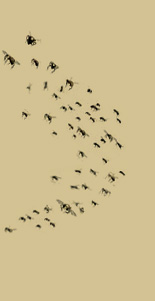
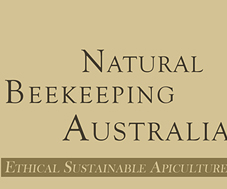
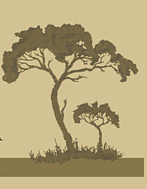
'The bee master must be first of all be a bee lover or he will never succeed' Tickner Edwardes The Lore of the Honeybee 1923 |
 |
 |
||||
  |
||||||
| MEDIA | TESTIMONIALS | ABOUT US | TERMS & CONDITIONS | CONTACT US | |
||||||
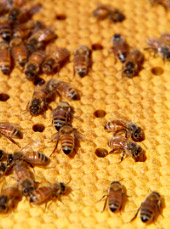 |
||||||||||||||||
| NATURAL BEEKEEPING AUSTRALIA - WARRÉ BEEHIVES The Warré hive is named after its inventor, Abbé Émile Warré (1867-1951). Responding to the obvious decline in beekeeping in France since his youth, Warré experimented with some 350 hives of various designs with the aim of producing a hive that was simple, economical, bee-friendly and assured a surplus for the beekeeper. The result was his People's Hive (Ruche Populaire) whose construction and operation he described in his book Beekeeping For All (L' Apiculture Pour Tous, 12th edition) . Beekeeping For All was made available to the English-speaking world when Pat Cheney and David Heaf translated the text in 2007 from the original French. Various articles about the Warré hive by David Heaf were published in bee journals around the world, including The Australasian Beekeeper issue of June 2008. We read this article and immediately recognised that the Warré hive represented a paradigm shift in beekeeping – albeit over 50 years after Warré’s death. We had been experimenting with ‘natural comb’ beekeeping in Langstroth hives for a number of years, but were immediately attracted to the key design elements and unique management techniques central to Warré’s hive and philosophy. We were particularly excited about how the hive would suit Australian beekeeping conditions. After populating the first Warré hive in Australia in 2009, we've been constantly impressed by the performance of the hive, not only in our own apiaries which now collectively number hundreds of Warré hives, but also those of our students. Please see below for an overview of the main features of a Warré beehive. |
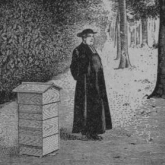 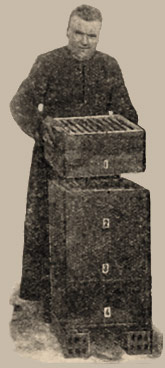 |
|||||||||||||||
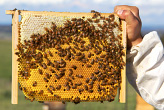 |
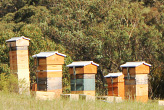 |
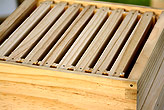 |
||||||||||||||
| About Natural Beekeeping Australia's Products/Services: MEDIA - TESTIMONIALS | Abbé Émile Warré | |||||||||||||||
| FEATURES OF A WARRÉ HIVE | ||||||
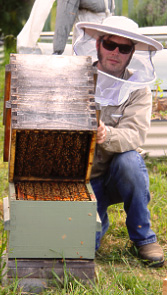 |
The Warré hive is a ‘divisible’ hive, and quite simple by design.
The simplicity is an important feature - Warré called his hive ‘The People’s Hive’ and designed it so that any person with basic
tools
and wood- working skills could make their own hive from locally sourced timber. The hive features a number of square wooden boxes of 300 x 300 x 210mm internal dimensions, which aim to mimic the natural cluster size of Apis mellifera and the natural nesting site for a honeybee colony, that of a tree hollow. Our modified version is slightly larger, and features dimensions of 308 x 308 x 240 mm. The reasons for this are purely practical - the standard timber plank size in Australia is 240mm. Our modified internal dimensions are the industry standard for 8 frames/combs in Australia, and allow space to remove individual combs with the use of our ‘open frames’. Each box features protruding handle cleats that are angled to shed water. A standard Warré hive is 2 boxes high (approximately 40L volume), although a height of 6 boxes or more can be achieved during a large honeyflow. 8 evenly spaced top-bars or open frames are located in each box, and feature a starter strip of beeswax that allows the bees to draw natural comb from the top-bar. No sheets of foundation are used, and wires are not needed to support the comb due to the small surface area. Importantly, the colony is generally enlarged by adding boxes beneath the existing boxes. This is called nadiring and is an excellent method of providing space to the colony, particularly in early spring, without fear of chilling the brood or disturbing the cluster. It also allows the brood nest to move downwards, in a healthy process of constant comb renewal. The queen is always laying in virgin comb, and is allowed to roam freely throughout the hive. As nectar becomes available in the environment and is brought back to the hive by foraging bees, the wax glands of the comb building bees are activated, encouraging the bees to build natural comb down into the boxes beneath, expanding the nest. This is a metabolic ‘renewal’ process of the individual bee and the superorganism as a whole. The brood cells at the top of the nest eventually become filled with honey, therefore, the honey stores are always located above the cluster. This is a beneficial arrangement for the bees – all their stores are located directly above them, and the honey acts as an insulating thermal dome. By allowing the bees to draw natural comb, the colony is also able to limit its size relative to the amount of nectar available in the surrounding environment. The re-organisation of the nest is done by the bees, not the beekeeper. Honey may be harvested from the top of the nest during a honeyflow or at the end of the season, provided that the bees have enough stores for the cooler winter months (generally 1 full box of honeycomb is needed, depending on the region and colony size). If the honey is harvested during the summer months, the bees are given additional space by nadiring new boxes. The cyclical process of renewal is healthy for the bees as the oldest comb is harvested from the colony and not returned to the hive. Above the frames in the uppermost box rests a simple fabric cloth, which is vapor permeable and much gentler on the bees than the typical wooden crown board. On top of the cloth sits a 100 mm deep ‘quilt box’, for holding straw or wood shavings. This quilt section acts as a great insulator (the honeybee colony is a warmth organism) and prevents solar radiation from penetrating the roof and overheating the hive, damaging the honey and stressing the bees. Any moisture accumulating in the hive is absorbed into the quilt filling, which can be easily and quickly renewed once a year if necessary. Therefore, the colony stays warm and dry. (NB. the quilt is not ‘open’ at the top to the outside environment, rather, moisture is absorbed into the quilt contents through the fabric cloth and stays there, or is released back to the colony, much in the same way moisture would ‘move’ in a tree hollow). A wooden cover board sits on top of the quilt section. On this board, we record our impressions of the colony each time we visit. Therefore, every time you open the hive, you are greeted with the history of the colony. A roof covers the top of the hive. The traditional Warré design is an attractive, ventilated gabled roof with sloping sides to shed rain and snow. In our hot, dry summers we have found the Warré roof to be superior to other conventional designs for protection from direct heat - particularly if the top layer of the roof is painted white. The hive sits on a stand at least 200 mm off the ground. We have completely modified the original bottom board and entrance for Australian conditions. A full width entrance is used to accommodate our larger colonies, heavy honey flows and hot summers. The entrance may be reduced in size during the cooler months. In areas with large populations of the honeybee pest the Small Hive Beetle Aethina tumida, we have modified the bottom board design to include an under-floor beetle trap that is filled with agricultural lime, to reduce the population of adult beetles within the hive. For more information about the benefits of using the Warré hive compared to the conventional framed Langstroth hive, please refer to Beekeeping For All and The Bee-friendly Beekeeper by David Heaf, and www.warre.biobees.com. |
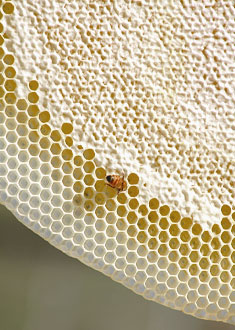 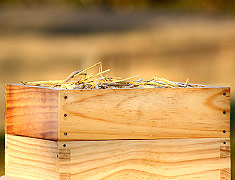 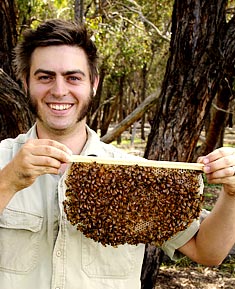 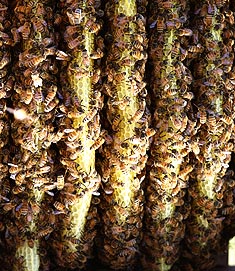
|
||||
To order a Warré hive, please go to the Products page |
Please visit Natural Beekeeping to read more about the Warré hive |
|
||||||
| ABN 79 921 638 711© MALFROY'S GOLD | ||||||